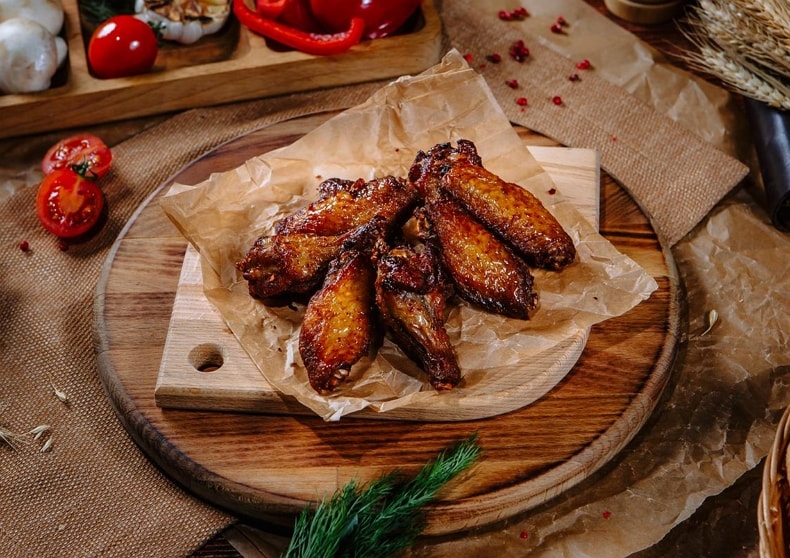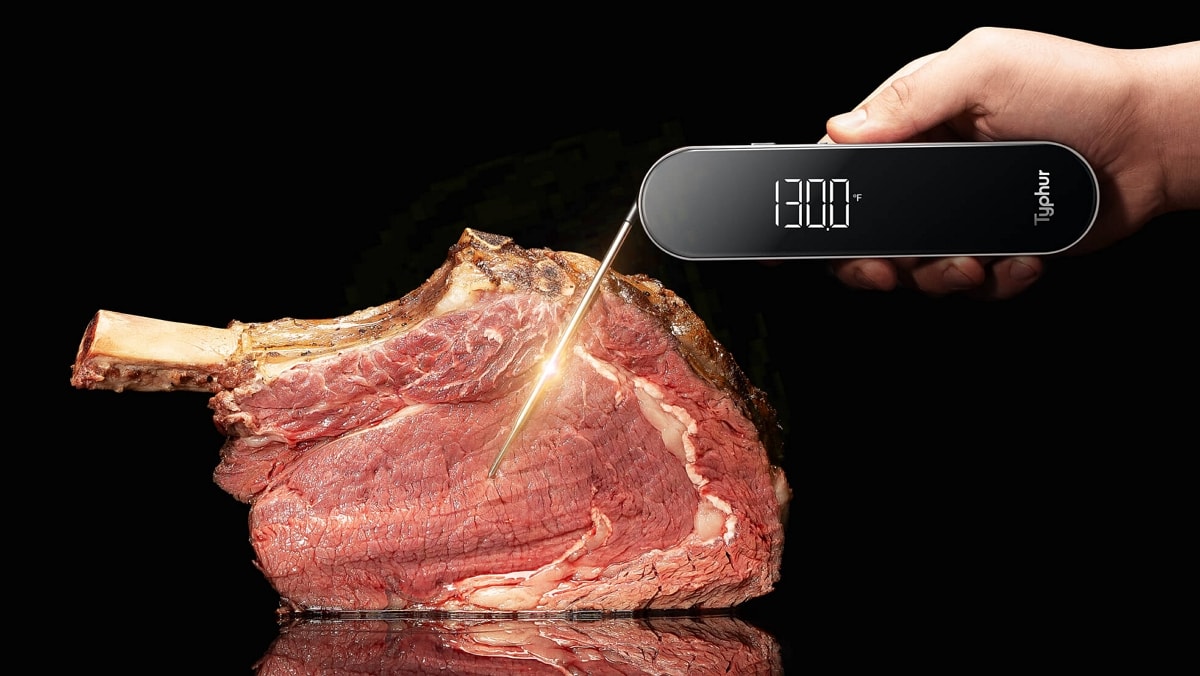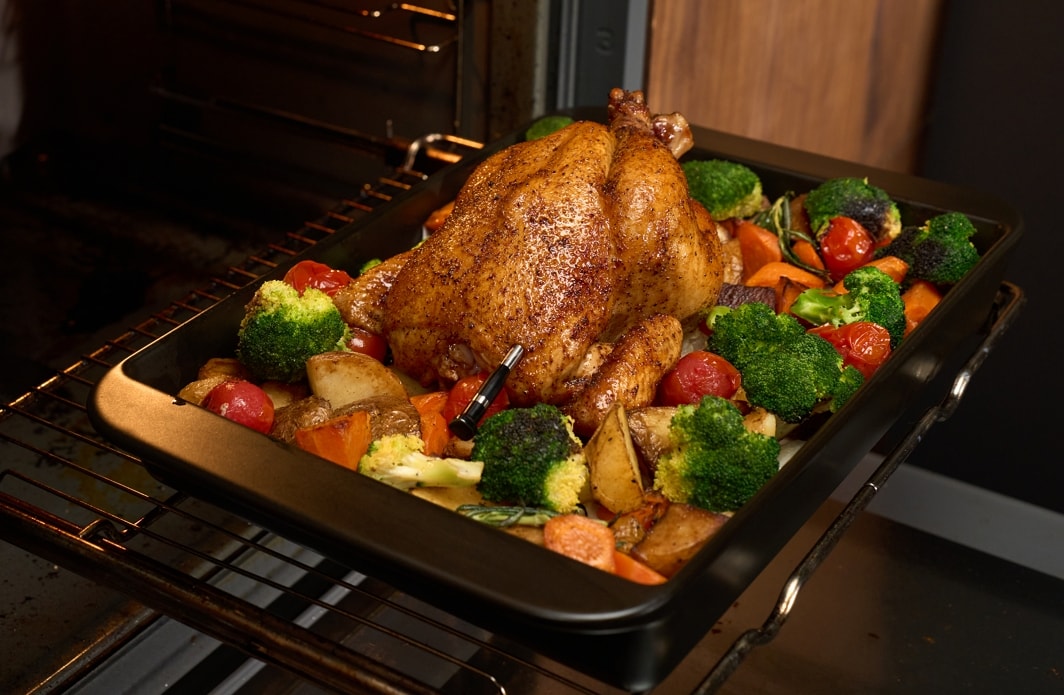When cooking meat, the key to perfection is getting the core temperature right. You can do all the procedures and timings, but without checking the internal temperature, you are essentially guessing.
You should know that cooking time can vary based on many factors, such as the cut of meat, its thickness, and the cooking temperature. For example, a 175g steak—its thickness plays a huge role in the cooking time. A small change in thickness can shift your steak from medium rare to medium.
Another factor is the meat’s initial temperature—did you take it straight out of the fridge or let it come to room temperature? Don’t forget about the type of grill or oven you’re using. A stainless steel grill provides less heat contact than a cast iron grill, which can affect how your meat cooks. Even a few degrees of difference in grill or oven temperature can change the internal temperature of your meat. This is why monitoring the core temperature is crucial for achieving perfect cooking.
In this post, we’ll dive into:
What is the Correct Core Temperature
When we talk about core temperature, we have to grasp the concept of temperature gradient—how the heat diffuses from the exterior surface of the meat through to the interior. This is especially relevant if you’re cooking meats like roast beef, pork shoulder, or whole chicken, where the exterior sections will cook faster than the interior.
Understanding the Temperature Gradient
The temperature gradient is the variation between the outside and the center of the meat. During cooking, heat initially hits the exterior of the meat, which gets cooked quickly. When the heat penetrates, it slowly reaches the center. That’s why it’s so crucial to use a meat thermometer to check the temperature at the center—where the meat is still colder than the exterior.
For instance, in a big roast, the edges will quickly hit 120°F (49°C), but the center will still be at about 50-60°F (10-15°C). That’s why cooking for the right amount of time at the correct temperature makes the whole piece of meat cook evenly.
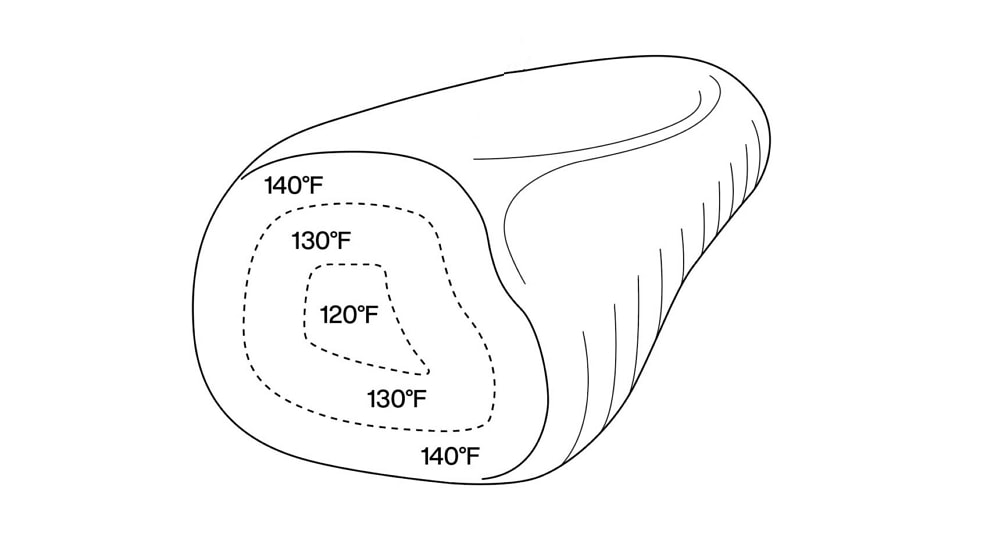
Why Core Temperature Matters
The internal core temperature is the true measure of doneness. Although the exterior of the meat may look done, it’s the interior that determines the final texture and wetness of the dish. For example, if roasting a whole chicken, the exterior skin may be golden brown, but if the internal temperature isn’t the target 165°F (74°C), the interior meat can still be undercooked and unsafe to eat.
The same applies to beef and pork—while the exterior layers may appear seared or caramelized, the internal temperature controls doneness of the meat whether you have it rare, medium, or well-done.
Precision cooking enters where this is involved, specifically with tools like the Typhur Sync Gold wireless thermometer. By observing the core temperature all the time and in real time, you can avoid your meat getting overcooked or undercooked and achieve flawless doneness every time.
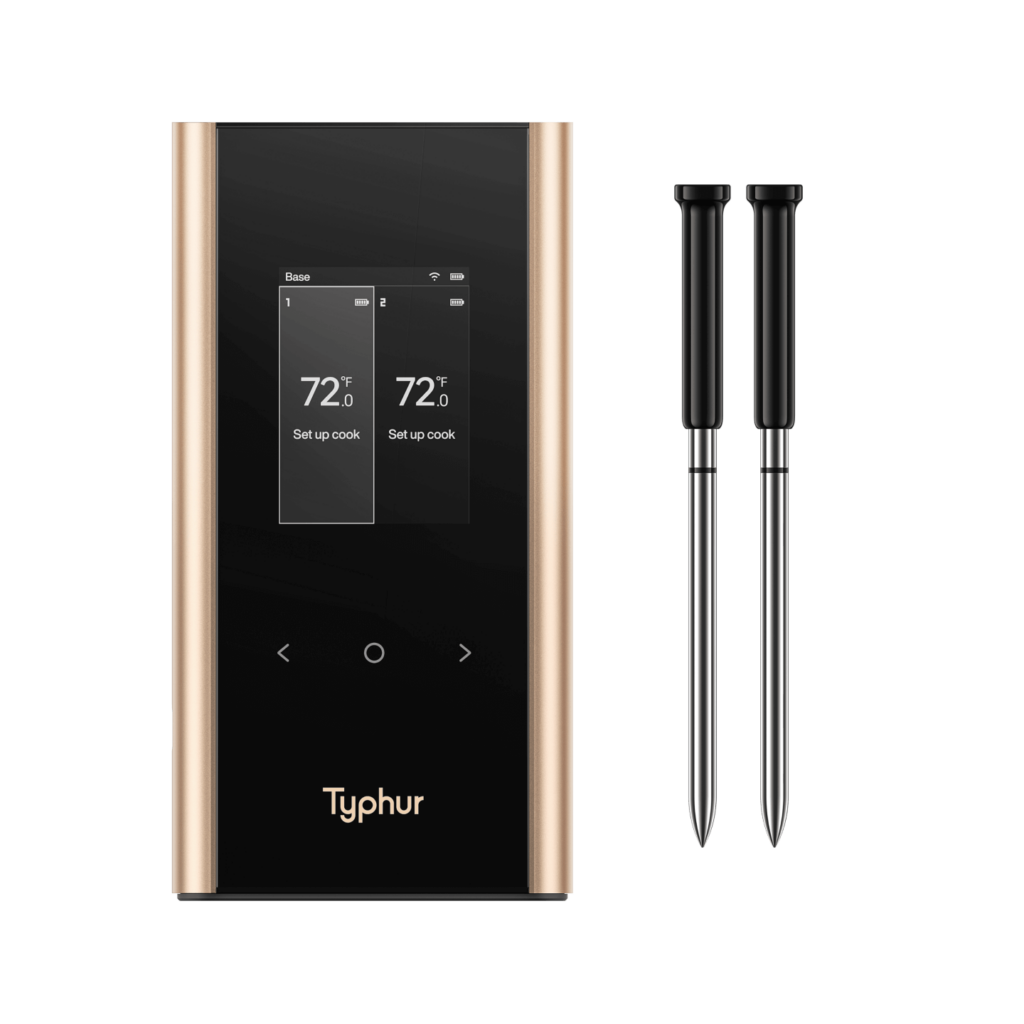
Long Range Wireless Meat Thermometer
Key Takeaways
- Core temperature is the most secure way to verify if your meat is cooked.
- The surface layers are heated prior, and therefore the core lags behind, requiring close monitoring.
- Temperature difference is the reason why a meat thermometer is crucial in attaining proper cooking and preventing of overcooking.
Precision Wireless Meat Thermometer for Core Temperature
As we mentioned before, cooking time depends on many factors—cut of meat, thickness, and the cooking temperature (or ambient temperature). So to ensure your meat is perfectly cooked to your desired temperature, you really need a smart meat thermometer: Typhur Sync Gold. Which elevates meat temperature monitoring with its innovative six-point temperature measurement system.
Each of the six strategically placed sensors inside the probe measures the temperature at a different point within the meat. This multi-sensor approach is a game-changer, providing a comprehensive, accurate reading of the meat’s core temperature. The precision of the readings is impressive, with an accuracy of up to ±0.5°F, ensuring that you get a complete, detailed temperature profile of your meat.
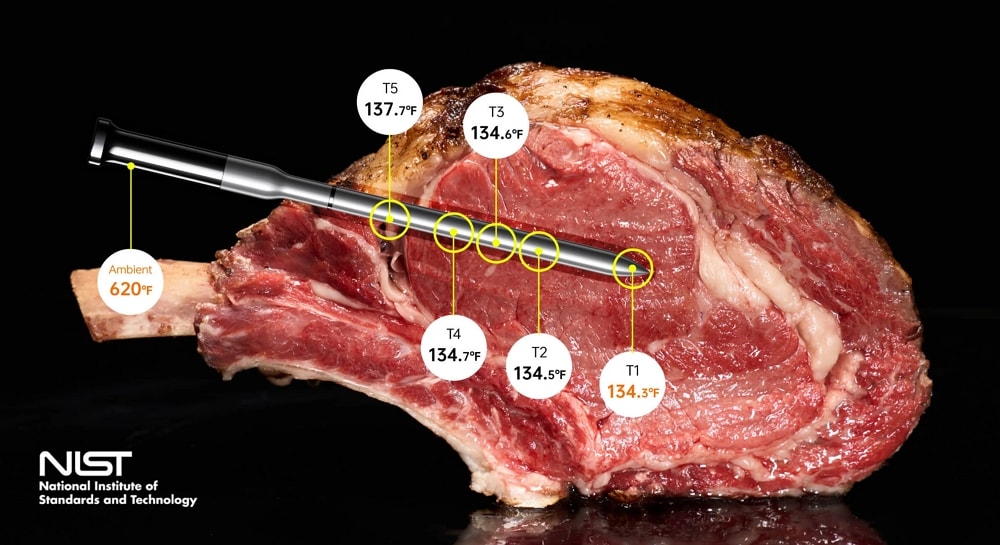
Data Algorithm from Multiple Sensors
At the heart of the Syncore system is a sophisticated data algorithm that works with the readings from the six sensors. This system can detect when cooking starts by recognizing an increase in the ambient temperature. It also calculates the remaining cooking time by tracking how the internal core temperature of the meat rises. The algorithm adjusts its calculations based on several factors, like cooking environment, method, and meat size, all of which can impact how quickly the temperature changes.
Thanks to Typhur Sync Gold, cooking a mouthwatering, juicy steak (or any meat) is no longer a guessing game. With precision temperature monitoring and advanced algorithms working together, getting your meat just right becomes as easy as pressing a button.
Core Temperatures for Meat, Fish, Poultry, and Vegetables
Different types of meat, fish, poultry, and even vegetables each have an ideal internal temperature for perfect texture and flavor. Here’s a guide to the core temperatures you should aim for when cooking various foods:
Beef
Beef cuts vary depending on the desired doneness, but the core temperature is key to achieving your perfect steak, roast, or brisket:
- Rare: 120°F (49°C)
- Medium-rare: 130°F (54°C)
- Medium: 140°F (60°C)
- Medium-well: 150°F (66°C)
- Well-done: 160°F (71°C)
- Brisket or slow-cooked cuts: 195-205°F (90-96°C) for tender, melt-in-your-mouth texture.
Lamb
Lamb has a rich flavor and is often best when cooked medium-rare or medium:
- Medium-rare: 135°F (57°C)
- Medium: 140°F (60°C)
- Well-done: 160°F (71°C)
Pork
Modern pork is safe to eat at lower temperatures than it used to be. Here’s the recommended range:
- Medium: 145°F (63°C)
- Well-done: 160°F (71°C)
- Pork shoulder or slow-cooked pork: 190°F (88°C) for pulled pork.
Chicken
Chicken must be cooked to a safe internal temperature to avoid foodborne illness:
- Whole chicken: 165°F (74°C)
- Chicken breasts: 165°F (74°C)
- Chicken thighs: 165°F (74°C)
- Ground chicken: 165°F (74°C)
Fish
Fish is best cooked at lower temperatures for a delicate texture:
- Salmon: 125°F (52°C)
- Other white fish (cod, tilapia, etc.): 140°F (60°C)
- Tuna: 120°F (49°C) for rare or 130°F (54°C) for medium.
Vegetables
While vegetables don’t necessarily need a thermometer, they should reach a point where they’re cooked but not overdone:
- Roasted vegetables: 185°F (85°C)
- Steamed vegetables: 180°F (82°C)
- Grilled vegetables: 190°F (88°C) for a charred finish and tender interior.
How to Check the Correct Core Temperature
Here is how to get the correct core temperature using Typhur Sync Gold smart wireless probes.
1. Insert the Probe Correctly
The first part of getting an accurate reading is to insert the thermometer probe into the right spot. For steaks, roasts, or poultry, always aim for the thickest part of the meat and avoid inserting the probe too near bones or fat, as these will give false readings. Make sure the safe notch and 5 internal sensors are completely inserted into the meat.
2. Set Your Desired Temperature
There is an ideal core temperature for each kind of meat for its optimal doneness. A steak, for example, is medium-rare at an internal temperature of 130°F (54°C) and well-done at about 160°F (71°C). The safe internal cooking temperature for poultry is 165°F (74°C).
You can set your desired temperature using the base device or the App and let the thermometer do the work. You’ll get an alert once your meat has reached the target temperature, so there’s no need to open the grill or oven to check.
3. Rest the Meat After Reaching the Core Temperature
When your meat has achieved the correct core temperature, don’t forget to allow it to rest for a minute or two. Resting allows the juices in the meat time to redistribute and makes the meat more juicy and flavorful.
The Typhur Sync Gold can even time this resting period so that you can get the most out of your meal. So, remove the meat from the heat when it’s done, and allow it to rest before serving.

Long Range Wireless Meat Thermometer
Conclusion
Using a reliable thermometer, like the Typhur Sync Gold, makes checking the correct core temperature a breeze. Whether you’re cooking a steak, chicken, or pork roast, you’ll know exactly when it’s ready without the guesswork. By following the steps above, you’ll ensure perfectly cooked meat every time, resulting in juicy, tender dishes that are cooked to perfection.


